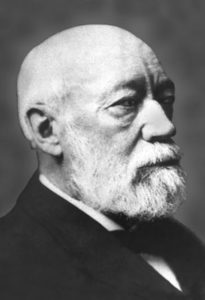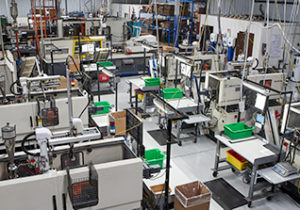When you think of all the great inventions of modern history, I am 90% sure that plastic injection molding isn’t at the top of your list. Inventions like cars, computers, and airplanes are most likely the things that would initially spark your mind as being on the list of “great inventions”, but have you ever considered the plastic injection molding process as being one of them? Almost all the items you use daily consist of some type of plastic whether it be your toothbrush, comb, or more complicated items used in fields such as medicine. The process of plastic injection molding provides businesses with a cost-effective way of creating materials that in turn provide consumers with an affordable product.
In 1863, a man named John Hyatt, who was working as a printer in Albany, NY, heard about a New York billiards company offering a whopping $10k to whoever could invent a satisfactory substitute for the ivory billiard balls. That amount of money in 1863 is the equivalent of over $230k in today’s era, so you can see why he sparked an interest! John quickly began working on several  experimental compositions —none of which produced a successful billiard ball. However, this did not set John back in his efforts at all. He ended up going into business with his brother making one of his experimental mixtures (a composite of wood pulp and shellac) into embossed checkers and dominoes. John kept at it with experiments to find that attractive and practical plastic material could be achieved by mixing nitrocellulose (very flammable), camphor, and alcohol and then pressing this mixture in a heated mold.
experimental compositions —none of which produced a successful billiard ball. However, this did not set John back in his efforts at all. He ended up going into business with his brother making one of his experimental mixtures (a composite of wood pulp and shellac) into embossed checkers and dominoes. John kept at it with experiments to find that attractive and practical plastic material could be achieved by mixing nitrocellulose (very flammable), camphor, and alcohol and then pressing this mixture in a heated mold.
John and his brother Isaiah were able to patent the plastic in 1870 and officially called it Celluloid in 1872, which they marketed as a substitute for hard rubber in denture plates. They ended up moving their Celluloid Manufacturing Company from Albany to Newark, NJ where they continued experimenting and put multiple patents to work. Eventually, they set up a company in the 1880s that consisted of a patented process for purifying water using coagulants and filters. John went on to invent several new and improved industrial devices such as roller bearings, sugarcane mills, and sewing machines.
 As time has progressed, so has the process of plastic injection molding and the equipment that goes along with it. For example, our plastic injection molding machines here at Reed City Group that once needed a person manning them constantly now include an automated press with robotic systems that allow a safer, faster process which has revolutionized the production times so that you can get better products to market faster. Not only have the machines been improved in numerous ways, but the plastic itself has also been developed over the years to become more versatile and less flammable, making it safer for producers and consumers.
As time has progressed, so has the process of plastic injection molding and the equipment that goes along with it. For example, our plastic injection molding machines here at Reed City Group that once needed a person manning them constantly now include an automated press with robotic systems that allow a safer, faster process which has revolutionized the production times so that you can get better products to market faster. Not only have the machines been improved in numerous ways, but the plastic itself has also been developed over the years to become more versatile and less flammable, making it safer for producers and consumers.
As you can see, working and living in the modern world wouldn’t be possible if it wasn’t for the products made using the plastic injection molding process. We are surrounded by plastic parts and items, and it makes our lives safer and much more convenient. From personal care products to containers that hold food and water, we live in a world that is strictly influenced by plastic injection molding, and the products that this historical process can produce. I believe it is safe to say that the plastic injection molding process is at the top of the “great inventions” list, wouldn’t you?

Recent Comments